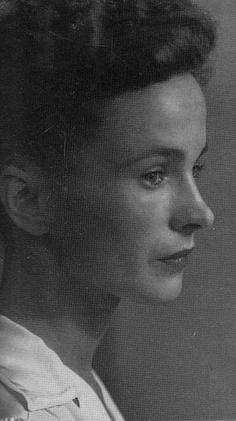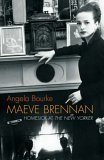Maeve Brennan facts for kids
Quick facts for kids
Maeve Brennan
|
|
|---|---|
 |
|
| Born | January 6, 1917 |
| Died | November 1, 1993 (aged 76) |
| Alma mater | American University |
| Employer | The New Yorker (1949–1981) |
| Spouse(s) | St. Clair McKelway |
| Parent(s) |
|
Maeve Brennan (born January 6, 1917 – died November 1, 1993) was an Irish writer. She wrote short stories and worked as a journalist. Maeve moved to the United States in 1934. This happened when her father got a job at the Irish Legation in Washington. She became an important writer for both Irish people living abroad and for Irish literature. Her articles, short stories, and a longer story called a novella have all been published.
Contents
Maeve Brennan's Life Story
Her Early Years
Maeve Brennan was born in Dublin, Ireland. She was one of four children. Her childhood home was at 48 Cherryfield Avenue in a Dublin area called Ranelagh. Maeve and her sisters were named after old Irish Queens: Emer, Deirdre, and Maeve.
Her parents, Robert and Úna Brennan, were from County Wexford. They were Republicans, meaning they supported Ireland's independence. They were very involved in Ireland's political and cultural fights in the early 1900s. They took part in the 1916 Easter Rising, a rebellion against British rule. Maeve's mother, Úna, was held in prison for a few days. Her father, Robert, was also imprisoned for his political actions.
Maeve was born while her father was in prison. He was in charge of publicity for the anti-Treaty Irish Republican Army during the Irish Civil War. He also started and ran The Irish Press newspaper.
Her father's political activities meant Maeve's childhood was sometimes difficult. In one of her stories, she wrote about how, when she was five, soldiers searched their home. They were looking for her father, who was hiding.
In 1934, when Maeve was seventeen, her family moved to Washington, D.C.. Her father was appointed Ireland's first minister to the United States. Maeve went to a Catholic school in Washington called Immaculata Seminary. She graduated in 1936. Then, she earned a degree in English from American University in 1938. Maeve and two of her sisters stayed in the United States when their parents and brother returned to Ireland in 1944.
Her Writing Career
After college, Maeve moved to New York City. In the 1940s, she started working as a fashion copywriter at Harper's Bazaar. She also wrote a column about Manhattan for a Dublin magazine called Social and Personal. She wrote several short pieces for The New Yorker magazine. In 1949, she was offered a full-time job at The New Yorker by its managing editor, William Shawn.
At The New Yorker, Brennan first wrote about New York life. She created short descriptions for The Talk of the Town section. She used the pen name "The Long-Winded Lady." She also wrote about books, fashion, and other topics. Her writing covered both Ireland and the United States.
The New Yorker began publishing Maeve Brennan's short stories in 1950. Her first story was called "The Holy Terror." It was about a woman named Mary Ramsay who worked in a ladies' room at a Dublin hotel.
Her work was supported by editor William Maxwell. She wrote under the managing editors Harold Ross and William Shawn. Even though many people in the United States read her work in the 1950s and 1960s, she was not well known in Ireland. This was true even though many of her stories were set in Dublin.
A collection of her New Yorker articles was published in 1969. It was called The Long-Winded Lady: Notes from the New Yorker. She also published two collections of short stories: In and Out of Never-Never Land (1969) and Christmas Eve (1974).
Her writing became more widely known after her death. This led to many of her stories being republished. Many articles were also written about her life and work.
Maeve Brennan's Personal Life
It is said that the love of her life was a writer and theatre critic named Walter Kerr. However, he ended their engagement and married another writer, Bridget Jean Collins.
In 1954, Maeve married St. Clair McKelway. He was also a managing editor at The New Yorker. Brennan and McKelway divorced after five years.
The famous playwright Edward Albee greatly admired Maeve Brennan's writing. He even compared her to famous authors like Chekhov and Flaubert. One of the characters in his play Quotations from Chairman Mao Tse-Tung is called "Long-Winded Lady." He dedicated some of his published plays to her.
Maeve Brennan wrote a lot in the late 1960s. However, around the time her first books were published, she began to face personal challenges. She struggled with her health later in life. She was last seen at The New Yorker offices in 1981.
In the 1980s, Maeve Brennan lived quietly. She was admitted to a nursing home in Arverne, New York.
Her Death
Maeve Brennan died from a heart attack on November 1, 1993. She was 76 years old. She is buried in Queens, New York City.
Maeve Brennan's Works
Maeve Brennan's writing style was different in her "Long-Winded Lady" articles compared to her short stories. The topics and how she wrote them were also different.
The New Yorker Articles
In her "Long-Winded Lady" pieces for The New Yorker, Brennan wrote about New York life. She made funny and sometimes sad observations about society in Manhattan. She often made fun of social traditions in a humorous way. In these stories, she was an observer. She would listen to strangers talking in places like bars, diners, and hotel lobbies. She would then add her own thoughts and details from her life. Brennan was always watching, never joining in. For example, she watched a protest from a window but did not go outside. A collection of these articles was published in 1969.
Short Stories
Brennan's short stories usually have few characters and simple plots. Some of her stories are gentle and touching. Others are more satirical, meaning they make fun of things. Her characters often feel lonely or stuck in their lives. Everything often stays the same for them. She sometimes used the same characters in different stories. For example, Hubert and Rose Derdon's marriage is explored over many years. In one story, Rose has died, and Hubert pretends to be sad.
The main feelings in Brennan's short stories are loneliness, sadness, and fear. Another common idea is how people want to express themselves. But this is often limited by society's rules and traditions. For example, in "The Devil In Us," she describes a school that tries to make everyone conform.
Brennan also wrote stories set in Manhattan. She called it "the capsized city," meaning it was a bit upside down. She said people were "hanging on" and still able to laugh. These stories are often more satirical. They make fun of the ideas of the middle class.
Brennan also wrote stories about her cats, dog, and beach cottage. These stories show her love for being alone and her trust in animals.
Two collections of her short stories were published during her lifetime. In and Out of Never-Never Land came out in 1969. Christmas Eve was published in 1974. These books were popular in the United States. However, they were not published in Ireland or the UK.
Novella
Brennan wrote a novella, which is a story longer than a short story but shorter than a novel. It was called The Visitor. She wrote it in the 1940s. But it was not published until 2000. This happened after the only known copy was found at the University of Notre Dame.
The Visitor is about how family pride and anger can be damaging. The story is about a 22-year-old woman named Anastasia King. She returns to Dublin to live with her grandmother after her parents die. Anastasia's mother had left her husband and his strict mother. Anastasia's grandmother is angry that Anastasia chose to live with her mother. Anastasia tries to connect with her grandmother. But her efforts fail, and she feels very lonely.
Books Published After Her Death
Maeve Brennan's writing was mostly forgotten in the 1980s. But in 1987, Mary Hawthorne, who worked at The New Yorker, became interested in her. She saw an older woman who looked a bit messy staring at the floor in the office. She learned it was Maeve Brennan. Mary Hawthorne started asking about her. She interviewed colleagues, family members, and a photographer. Hawthorne's essay about Brennan was published.
In the same year, an editor named Christopher Carduff published new collections of Brennan's work. He published a larger collection of her "Long-Winded Lady" pieces. He also published The Springs of Affection, a book of her short stories. William Maxwell wrote the introduction for The Springs of Affection.
The discovery and publication of The Visitor also helped people become interested in Brennan again. She was also mentioned in Roddy Doyle's book Rory and Ita. He wrote that she was a cousin of his mother. She stayed with his family and wrote book reviews for The New Yorker in their garden.
In 2004, Angela Bourke's biography Maeve Brennan: Homesick at the New Yorker was published. In this book, Bourke suggests that Maeve Brennan might have inspired the character Holly Golightly. This character is from Truman Capote's novella Breakfast at Tiffany's (1958). Maeve Brennan and Truman Capote had worked together at Harper's Bazaar and The New Yorker.
In September 2013, Eamon Morrissey wrote and performed a play called "Maeve's House." It was shown at the Abbey Theatre in Dublin. Many of Brennan's stories were set in her childhood home at 48 Cherryfield Avenue. Morrissey later lived in this house. He eventually met Brennan in New York. The play is about Maeve Brennan, her writing, her childhood home, and their brief meeting. It is a one-person show.
See also
 In Spanish: Maeve Brennan para niños
In Spanish: Maeve Brennan para niños


